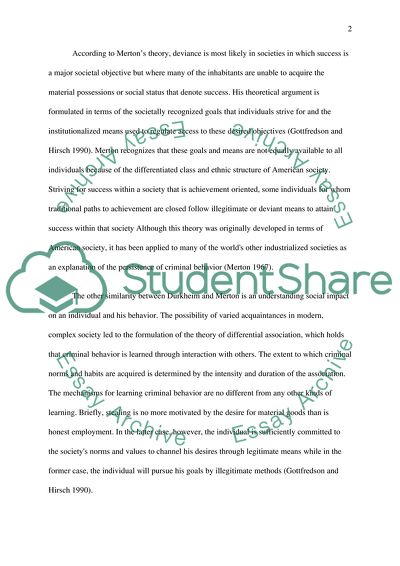Cite this document
(The Functions of Crime in the Theories of Emile Durkheim and Robert King Merton Literature review Example | Topics and Well Written Essays - 1250 words, n.d.)
The Functions of Crime in the Theories of Emile Durkheim and Robert King Merton Literature review Example | Topics and Well Written Essays - 1250 words. https://studentshare.org/social-science/1717631-compare-and-contrast-the-functions-of-crime-in-the-theories-of-mile-durkheim-and-robert-king-merton
The Functions of Crime in the Theories of Emile Durkheim and Robert King Merton Literature review Example | Topics and Well Written Essays - 1250 words. https://studentshare.org/social-science/1717631-compare-and-contrast-the-functions-of-crime-in-the-theories-of-mile-durkheim-and-robert-king-merton
(The Functions of Crime in the Theories of Emile Durkheim and Robert King Merton Literature Review Example | Topics and Well Written Essays - 1250 Words)
The Functions of Crime in the Theories of Emile Durkheim and Robert King Merton Literature Review Example | Topics and Well Written Essays - 1250 Words. https://studentshare.org/social-science/1717631-compare-and-contrast-the-functions-of-crime-in-the-theories-of-mile-durkheim-and-robert-king-merton.
The Functions of Crime in the Theories of Emile Durkheim and Robert King Merton Literature Review Example | Topics and Well Written Essays - 1250 Words. https://studentshare.org/social-science/1717631-compare-and-contrast-the-functions-of-crime-in-the-theories-of-mile-durkheim-and-robert-king-merton.
“The Functions of Crime in the Theories of Emile Durkheim and Robert King Merton Literature Review Example | Topics and Well Written Essays - 1250 Words”. https://studentshare.org/social-science/1717631-compare-and-contrast-the-functions-of-crime-in-the-theories-of-mile-durkheim-and-robert-king-merton.


